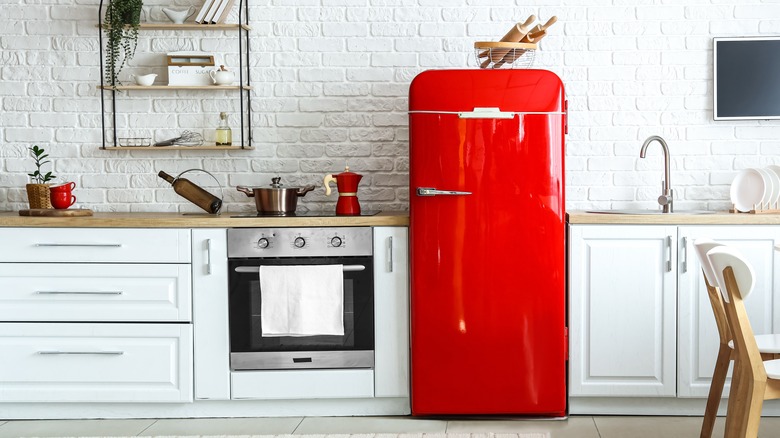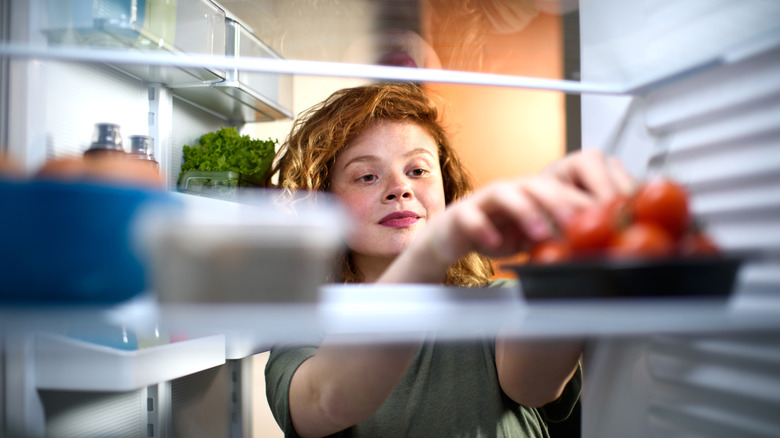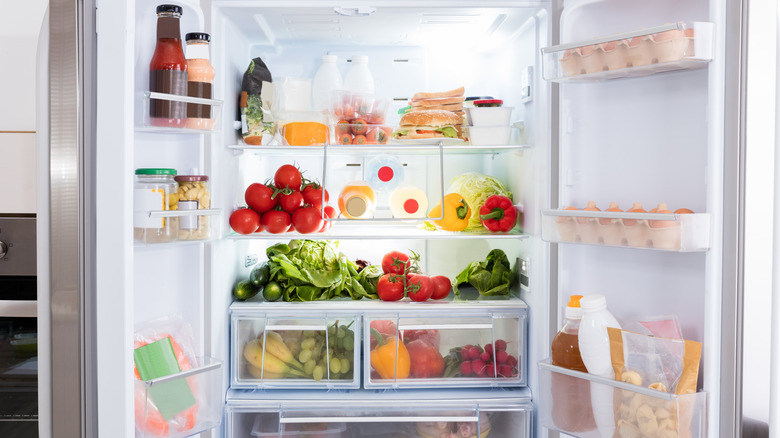The Temperature Sweet Spot To Keep Your Refrigerator At
Whether it's a mini fridge or an industrial model, the refrigerator is a key part of any kitchen. Refrigerators are the main line of defense when it comes to protecting perishable foods from bacteria, and are the only place you can safely store a variety of leftover meals, on-the-go snacks, and everyday ingredients like milk and eggs. This appliance's ability to hold off food spoilage may seem magical, but it works through the straightforward science of refrigeration. By maintaining a low temperature and blocking out external heat, refrigerators create a hostile environment for bacteria and are able to slow down the rate at which food spoils. However, refrigerators can only accomplish this when used correctly, which involves keeping them at the proper temperature.
If a refrigerator's internal temperature is too high, it can foster bacterial growth in your food. Some of these bacteria are known as spoilage bacteria; they are mostly harmless, but cause food to lose quality, per the U.S. Department of Agriculture. But other bacteria are much more dangerous. According to Healthline, bacteria like E. coli, Salmonella, and Listeria monocytogenes can cause food poisoning when ingested. This can lead to serious symptoms like high fever, headache, stomach pains, gastrointestinal distress, or worse. It's important to keep your fridge cold to stop bacteria from incubating in your food, but you also don't want to let it get too cold, which can compromise the quality of your food — 35 to 38 degrees Fahrenheit is the sweet spot.
Keep the fridge a bit above freezing
The Food and Drug Administration recommends that refrigerators be kept at 40 degrees Fahrenheit or lower. This temperature range will help you prevent foodborne illnesses, but for the best results, it's best to go a little lower. Setting your temperature anywhere from 35 to 38 degrees Fahrenheit will give you a good buffer zone to account for a faulty thermometer, so it's less likely the fridge will ever go above 40 degrees, which the USDA describes as the "danger zone" for breeding bacteria. Along with being safely under the 40-degree threshold, a fridge temperature of 35 to 38 degrees is also warm enough that nothing will be frozen, which can reduce the quality of some foods.
As long as you're setting the refrigerator to the best temperature, you might as well set your freezer temperature too. The FDA says freezers should be kept at 0 degrees Fahrenheit. Any warmer and food may not freeze all the way through; any softer and you'll get freezer burn and an exorbitant electric bill. Not every model of fridge or freezer has a thermometer, so investing in a couple to keep in your appliances is a smart choice to ensure the temperature doesn't waver.
More tips for proper refrigeration
Even if your refrigerator is set to the correct temperature, improper refrigeration techniques can still cause issues. If you have a large amount of warm food, say a large amount of meal-prepped dishes or an array of leftovers, avoid putting everything in the fridge while it is still hot. The influx of high temperatures in the enclosed refrigerator can raise the internal temperature above 40 degrees, which can cause bacteria to start growing. If you just have one extra plate or food container, it's fine to pop it in the fridge immediately, but large amounts of food should be left to cool.
However, the USDA says food should not be left to sit out for more than two hours. So, if you have a large amount of hot food that needs to go into the refrigerator, set yourself a timer so you won't forget it as it cools. Or, if you're in a rush, divvy big batches of food into smaller containers so that it can cool down faster. There are plenty of organization hacks to make the most of your fridge, but none are as important as making sure it stays at a safe temperature. So keep your refrigerator at 35 to 38 degrees Fahrenheit to keep the contents safe for as long as possible.


